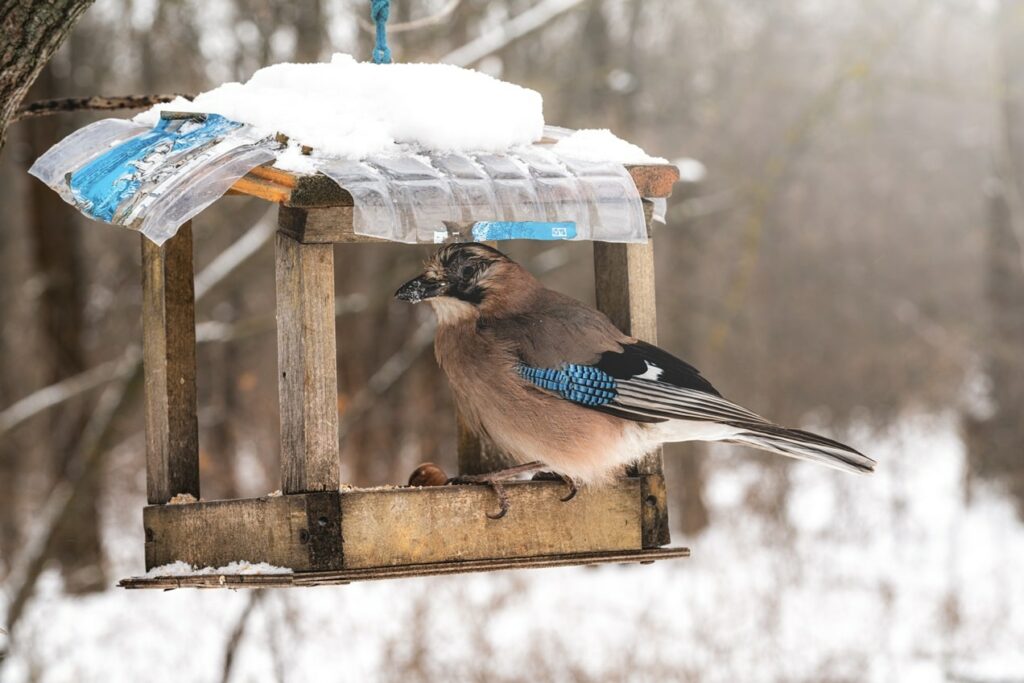If you’re a bird enthusiast and own a large yard you intend to use as a happy place for the birds in your area, you’re probably wondering if a bird feeder will help gather them around the house. It definitely will!
But how do birds actually find bird feeders? Do they have some special foraging techniques? And, besides this, can you do something to make the process easier for them?
Birds use their keen eyesight to locate bird feeders. Once they spot one, the birds may return regularly to its location because they’re believed to be able to associate things and remember where they last found something to eat.
If you want to learn more, keep reading! We’ve prepared some curiosities you might not want to miss!
How Do Birds Find Bird Feeders?
Birds rely on their eyesight to locate food. While some bird species are known to have an excellent sense of smell, it’s unknown whether they use it to locate bird feeders.
Furthermore, they spend much of their time looking for food sources, so they’re also aware of their surroundings and can associate places with food sources, as well as remember locations.
For example, migrating garden warblers are known to remember food locations for around a year!
As such, it’s likely that the birds in your area will simply spot the bird feeder you set for them and return to check it out during their next foraging time.
Moreover, if they’re generally familiar with feeders, birds will recognize them as food sources more easily. If you set up a bird feeder, you can rest assured that, sooner or later, some birds will pop up in your yard.
If you want to make it easier for them, you can go the extra mile, of course, and adjust your yard to look more appealing to these amazing creatures! Keep reading, as we’ll share some great tips about this!

Do Birds Tell Each Other Where Food Is?
While birds primarily rely on their eyesight to locate food, help that comes from other birds is also useful sometimes.
Birds communicate through vocal sounds, body language, and visual cues as well. While there’s little scientific proof to confirm that birds do indeed tell each other where food is, the possibility that they share this information is very high, although they might not even do this consciously.
Whether they indeed do this and the way they use to spread information depends on the species.
For example, birds that fly in flocks will naturally follow each other toward food sources, while solitary species will most likely find food alone or, if they are lucky enough, follow other birds flying toward bird feeders. Apparently, some birds were observed relying on other species flying in a certain direction to find food.
In fact, there is even something scientists call a “mixed-species feeding flock” or a “mixed hunting party,” which is a flock consisting of different insectivorous bird species that forage together.
Besides this, small birds are often observed foraging together, as this increases their chance to locate food sources and protect themselves from predators. This indicates that some birds may indeed help each other find food.
How Do Birds Find Feeders in the Winter?
If you want to set a bird feeder for non-migratory birds that remain around your house even when temperatures drop dramatically, we’d like to congratulate you, as you’re doing them a great favor!
You shouldn’t worry about them finding the feeder, as they’re an essential food source in winter! They’ll gather around it like never before! Since food is scarce when temperatures drop, birds are much more attentive while looking for food, which is why there’s a high chance they’ll find your bird feeder in no time!
It’s important, however, to add to the feeder food sources that birds benefit from when the weather is bad – primarily seeds and other food sources with high-fat content, which they use to conserve energy and stay warm.
How To Help Birds Find Bird Feeders?
First and foremost, you should consider where to place the bird feeder, as this is a crucial step in the process. It should be in a safe place; otherwise, birds won’t even look at it.
We recommend avoiding open areas and locations where squirrels or other animals can reach birds. As such, placing the bird feeder close to natural shelters like shrubs or trees is an excellent idea.
Birds have excellent vision; besides this, they can see many more colors than humans! Therefore, if you want the birds to spot your bird feeder easily, you can “decorate” it with purple, green, or yellow elements.
Are you worried that the birds won’t see your feeder? We have the solution! Place it close to a water source, as birds often follow the sound of water while foraging. You can even install a bird bath fountain!
Once you’ve decided on a location, ensure that the food in the feeder is what the birds you plan to attract to your yard eat. The birds won’t bother returning to your feeder if the food source doesn’t look appealing.
For example, if your “targets” are finches and they’re not coming to your feeder, you might need to spend some time researching their diet. While they’re primarily granivorous, some also feed on arthropods, mealworms and even berries!
Besides this, if the birds you want to see around your house are granivorous, you can spread some seeds throughout your yard, as well. Unfortunately, this is not a good solution for insectivorous species.

Good information and tips for beginner bird feeders. Veterans know much details due to their experience.
Undoubtedly birds search out food sources. But I am not in favours of bird feeders because easily available food may jeopardize their natural instincts of searching food.